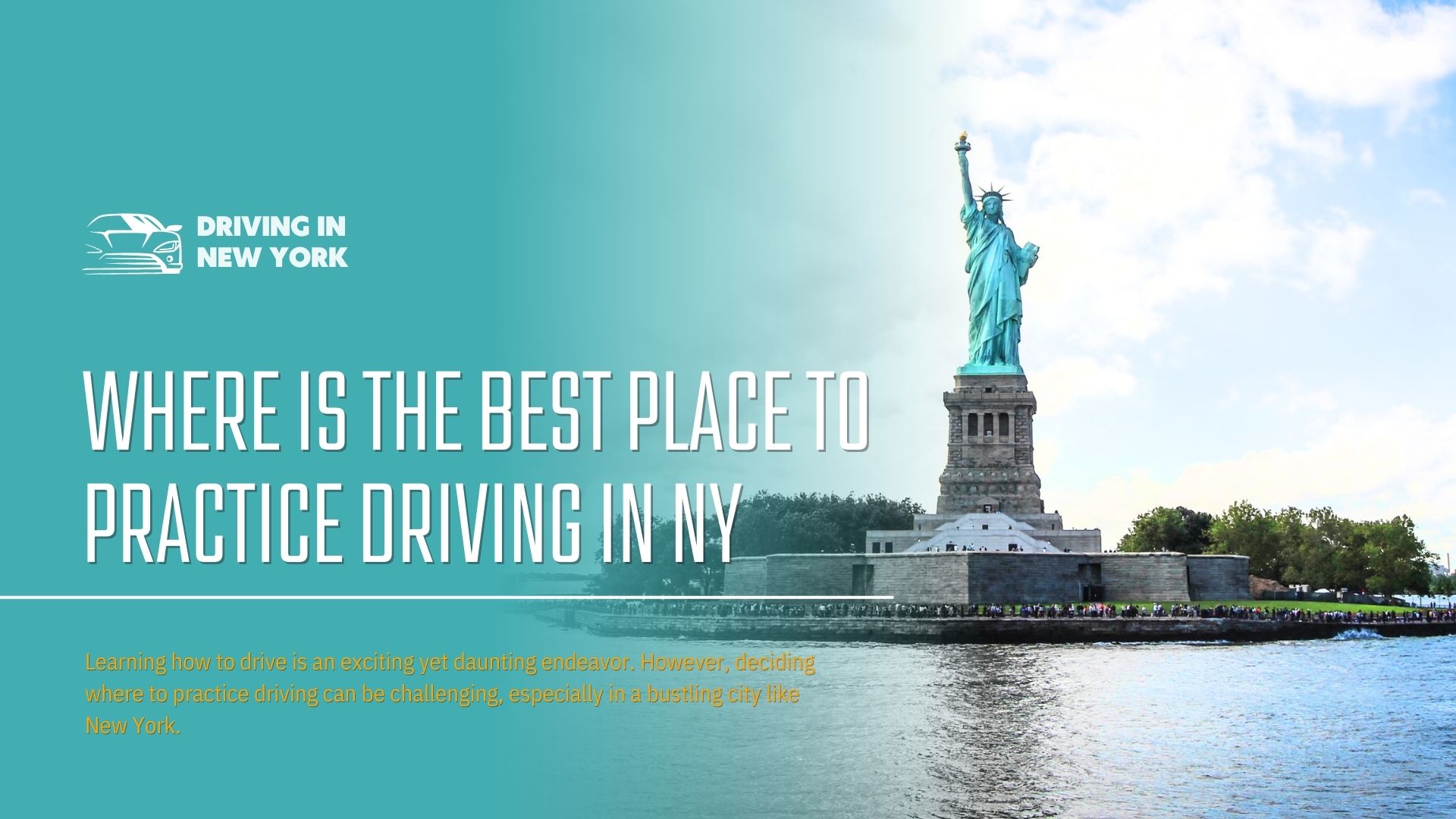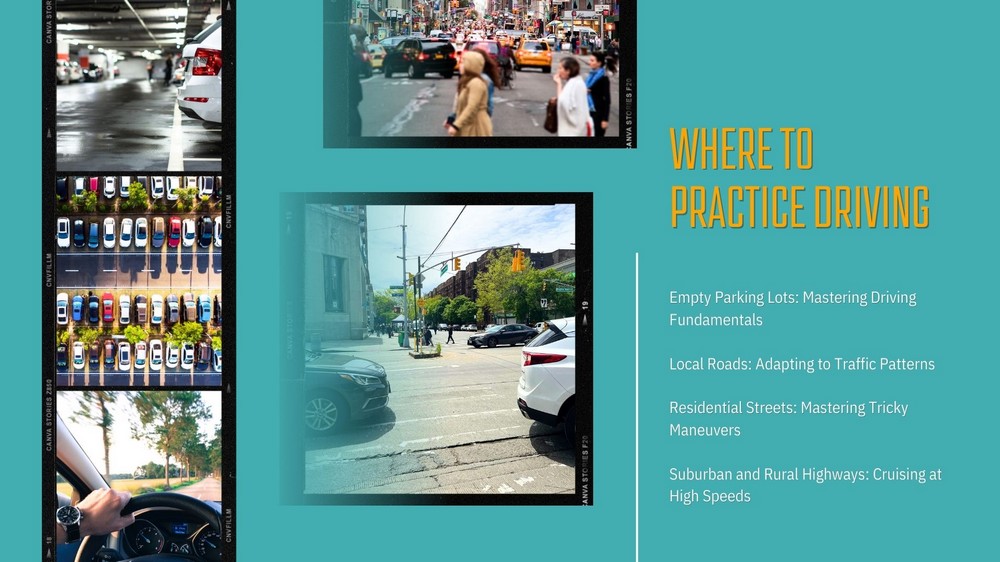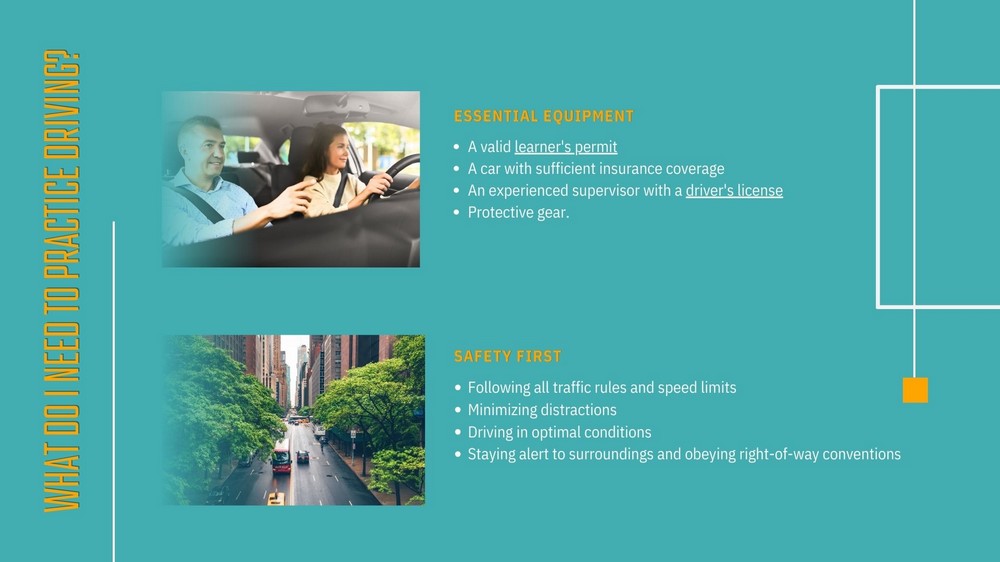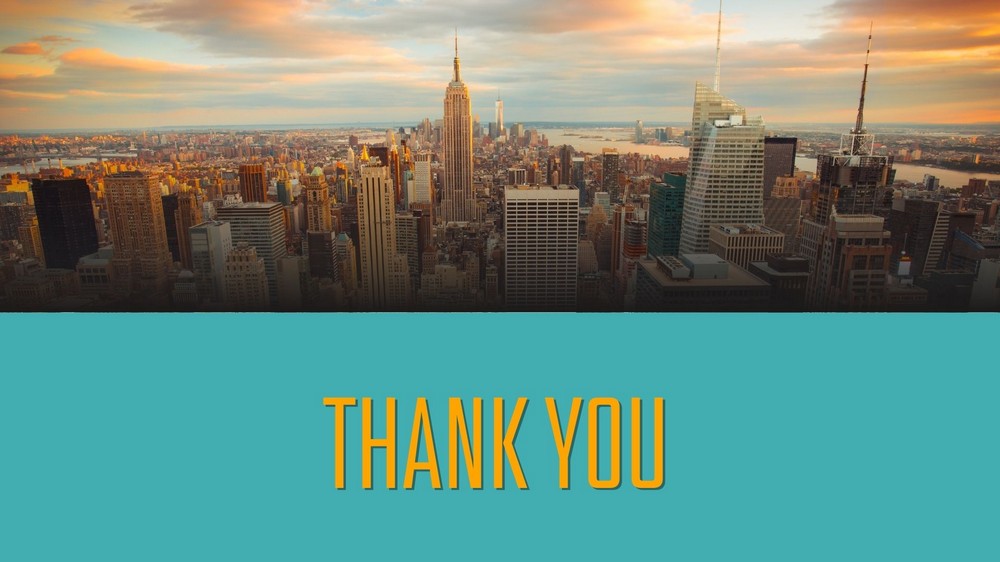Where is the Best Place to Practice Driving in NY

Table of Contents
Learning how to drive is an exciting yet daunting endeavor. As a new driver, gaining confidence behind the wheel is key to mastering this essential life skill. However, deciding where to practice driving can be challenging, especially in a bustling city like New York. From crowded streets to highways buzzing with traffic, the diversity of roads and conditions here makes choosing suitable practice spots critical.
This comprehensive guide will illuminate the best places to practice driving across New York’s distinct boroughs. We will explore how progression across parking lots, local roads, highways, and busy intersections allows you to systematically build core driving competencies. With strategic practice tailored to your skill level, you can smoothly navigate demanding urban roads, adverse weather, and the infamous New York traffic.
Embark on your driving journey armed with the tools to evaluate roads by difficulty level. Our borough-by-borough recommendations will match you with practice spots suited for refining specific maneuvers, whether parallel parking on Brooklyn’s streets or merging onto Queens’ Grand Central Parkway. As an added perk, we share insider tips for practicing at unconventional times when roads clear out.
By the end, you will have a roadmap to guide your practice sessions as you gain confidence behind the wheel. So buckle up and let’s hit the open roads to build your driving prowess across New York’s diverse terrain!
Call Us Today 6AM-10PM
Or fill out the form 24/7
Our team is here to guide you with promotions, instructor availability, and the best training package for you.
Where to Practice Driving

Selecting strategic practice spots tailored to your skill level is key to mastering driving competencies. We will explore prime locations across boroughs for refining core techniques, from parking fundamentals to navigating tricky intersections.
Empty Parking Lots: Mastering Driving Fundamentals
For beginners, empty parking lots offer an ideal risk-free environment to get comfortable behind the wheel. The spaciousness allows you to practice essential maneuvers like:
- Accelerating and braking smoothly
- Turning and switching lanes
- Reversing and parallel parking
We recommend large lots at malls and stadiums during off-peak hours. For instance, Citi Field's parking lot empties out on non-game days. Use cones to set up driving courses and have experienced companions provide guidance.
Once you have honed basic parking skills, advance to lots with light traffic to encounter real-life obstacles. Locations like Queens Center Mall will expose you to navigating cars and pedestrians.
Local Roads: Adapting to Traffic Patterns
Local roads with sparse traffic introduce authentic street conditions without overwhelming novice drivers.
Aim for well-lit roads with:
- Clear visuals
- Gradual turns
- Long stretches to practice building speed
We suggest neighborhoods like Forest Hills Gardens in Queens during midday weekends. Traverse the leafy, laidback streets to learn traffic etiquette and right-of-way rules while building confidence.
Residential Streets: Mastering Tricky Maneuvers
Practicing on residential streets allows you to refine complex maneuvers central to urban driving. The Brownstone Brooklyn neighborhoods like Park Slope are ideal for:
- Parallel parking between vehicles
- Reversing out of narrow driveways
- Turning through small intersections
Additionally, incorporate routes you frequent to grow accustomed to area signage. Enhance adaptability by driving in different weather conditions too.
Suburban and Rural Highways: Cruising at High Speeds
Venture to highways flanking New York City to expand driving capabilities. Suburban highways like Long Island's Northern State Parkway expose you to higher density traffic. Practice:
- Merging onto feeds at speed
- Maintaining speed limits
- Changing lanes safely
Alternatively, upstate New York's rural highways offer open straightaways to build high speed-driving confidence without traffic constraints.
Call Us Today 6AM-10PM
Or fill out the form 24/7
Our team is here to guide you with promotions, instructor availability, and the best training package for you.
What Do I Need to Practice Driving?

Before hitting the streets, ensure you have the necessary supplies and knowledge to productively practice driving.
Essential Equipment
To legally and safely practice driving in New York, you need:
- A valid learner's permit
- A car with sufficient insurance coverage
- An experienced supervisor with a driver's license
- Protective gear:
- Seat belts
- Airbags
- Adjusted mirrors
Ideally, choose an automatic-transmission car to reduce the attention demanded while learning.
Safety First
When driving, prioritize road safety by:
- Following all traffic rules and speed limits
- Minimizing distractions by:
- Stowing electronic devices
- Maintaining posture
- Keeping music low
- Driving in optimal conditions:
- Clear weather
- Daylight hours
- Low-traffic times
- Staying alert to surroundings and obeying right-of-way conventions
Practice legally and defensively to build critical muscle memory for navigating New York's dynamic streets. An experienced companion can provide real-time guidance to harness teachable moments.
With the foundation covered, delve into our borough-specific recommendations to pinpoint practice spots catered to developing core driving competencies across skill levels. Consistent practice tailored to your improving capabilities will steadily bolster on-road confidence.
Mastering the Streets of New York: A Journey of Practice
Learning to drive requires dedication and strategic practice to translate knowledge into road readiness. As this guide has shown, New York offers distinctive terrain to hone essential skills as you progress from parking lots to bustling boulevards.
The key is matching practice spots to your evolving skill level so that each session stretches your capabilities without compromising safety. Build fundamental competencies like acceleration and turning in empty lots before incorporating hazards to sharpen hazard perception. Rural highways introduce high-speed challenges while residential streets allow mastering intricate maneuvers.
Soon the orchestrated chaos of merges, difficult weather, and the notorious New York traffic will feel conquerable. Stay vigilant, prioritize methodical skill-building, and learn from experienced drivers willing to supervise your journey. With consistent dedication, you will smoothly navigate this magnificent, if not slightly manic, driving landscape.
So embrace the adventure of the open road. New York's diverse terrain awaits eager learners so that one day, you can confidently take to the streets on your own.

Call Us Today 6AM-10PM
Or fill out the form 24/7
Our team is here to guide you with promotions, instructor availability, and the best training package for you.
Frequently Asked Questions
-
What are the best places for a complete beginner to practice driving in New York?
For complete beginners, start by practicing in large, empty parking lots. These offer ample space to work on fundamentals like using the pedals, steering, and getting a feel for the vehicle without obstacles. Some good options are stadium parking lots, mall lots, and college campus lots during off-hours.
-
What places allow practicing driving on roads with light traffic in New York?
When you have mastered the basics, look at residential streets and local roads which see fewer vehicles. Recommended areas include Forest Hills Gardens in Queens, Park Slope in Brooklyn, Riverdale in the Bronx, and the Upper East Side in Manhattan during weekends, nights or mid-day.
-
Where can new drivers practice tricky maneuvers like parallel parking in New York City?
Focus on Brownstone Brooklyn neighborhoods like Park Slope and Carroll Gardens to master parallel parking between vehicles and reversing out of tight spaces. The residential streets here offer great practice spaces to develop these key urban driving techniques.
-
What are some good areas to practice highway and high-speed driving near New York City?
Long Island highways like the Northern State Parkway or rural routes upstate expose new drivers to higher speed limits to work on merging, lane changes and maintaining speed. Both offer great practice grounds as alternatives to the congested highways traversing NYC.
-
How many practice driving hours are recommended before taking the road test in New York?
It's recommended to get at least 20-50 hours of practice across various road types and conditions before taking the license road test. This helps develop well-rounded experience and anticipate hazards. Review New York's graduated driver licensing laws for minimum practice hour requirements for your age group.
-
What’s the passing score for the permit test?
You must correctly answer at least 14 of the 20 questions (70%) to pass, including 2 of the 4 road sign questions.
-
How do I schedule my learner’s permit test?
You can schedule an appointment online, in person at the DMV, or by phone. Make reservations well in advance online for fastest processing.
-
What restrictions apply to my learner's permit?
Restrictions include mandatory supervision by an adult, nighttime and passenger limits, use of cell phones, and additional rules. Violations lead to citations, fines, suspension or revocation of your permit.
 English
English Spanish
Spanish 

